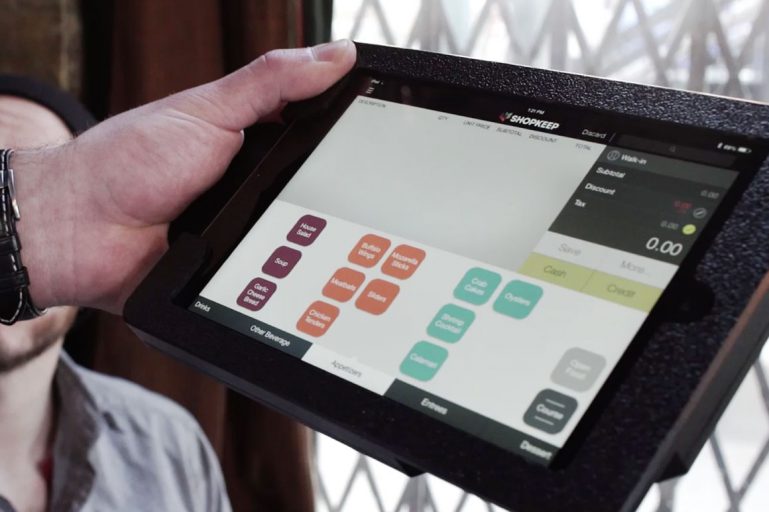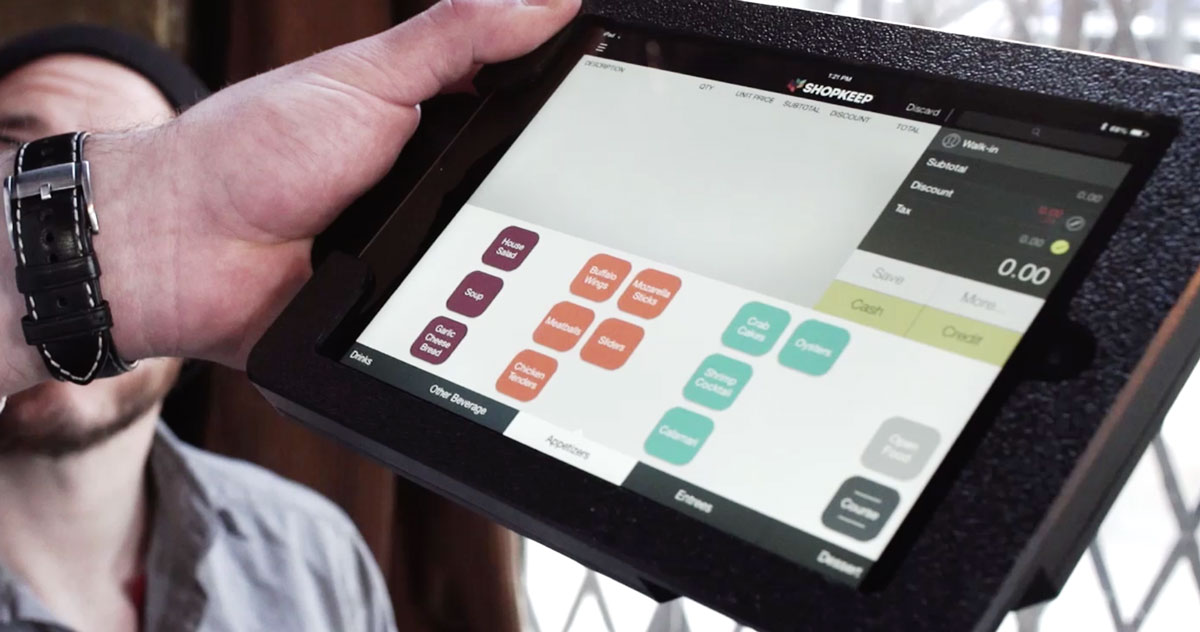
The Bottom Line on Mobile Point of Sale (mPOS) & mPayments
Let’s talk about mobile point of sale versus mobile payments.
In the last five years, both mobile point of sale (mPOS) and mobile payments (mPayments) technology has taken quantum leaps. This innovation is opening a whole new world of opportunities for retailers. In this new world where smartphones, tablets, and other mobile devices have come to dominate the retail and hospitality industries, mobile POS systems and mobile payments are two areas that are commonly talked about, but not clearly defined.
While the terms “payment” and “point of sale” offer some level of differentiation between the two, the options that are available in the market for each are so varied, and in some cases, so nuanced, that many business owners can’t quite explain the difference. This becomes a more significant problem when the time comes to select a point of sale (POS) technology. Without a clear understanding of the options available to you, you might end up making the same costly mistakes as many other small business owners. We don’t just mean in terms of dollars and cents.
Choosing the wrong point of sale technology means that you won’t have the best possible tools for running and growing your business. That could include anything from subpar reporting and analytics to ineffective inventory management tools and an absence of critical integrations. It can also mean less flexibility choosing a processor, which can lead to paying higher rates or the inability to accept new cutting-edge mobile payments technology such as Apple Pay and other NFC payments.
That said, it’s important to understand the differences between these two technologies, or else risk setting your business back for years to come. So, how do you differentiate between the two and ensure that you are making the right choice? We’ve outlined what you should know about each below.
Mobile Point of Sale Software
Mobile point of sale – also often referred to as mPOS – is an iPad, Android tablet, or smartphone that serves the function of the traditional cash registers or POS terminals used in brick and mortar businesses like retail shops and restaurants. Often this device is paired with additional POS hardware like a credit card reader, barcode scanner, and cash drawer.
Traditionally, cash rendered for goods and services was accepted and accounted for at the cash register and then tracked and reported on manually by bookkeepers. This tracking could have been carried out with a paper ledger, spreadsheet software, or by manually entering data into an accounting tool like QuickBooks. Modern retail and payments technology has completely shifted and optimized this process, saving time for business owners and providing flexibility.
mPOS is an umbrella term that refers to both the hardware and software components of these payment systems. The majority of mobile POS companies run their software on tablets like the iPad, or the Android equivalent, because of the reliability and design. They’re less bulky than the traditional PC-based point of sale systems but large enough to capture sales and customer information comfortably. They also tend to look nicer than a standard electronic cash register and can add to the aesthetic of your store.
iPad POS systems like ShopKeep have become the preferred choice for accepting payments for growing small businesses. They provide the flexibility to accept payments on a sophisticated system from a stationary position, on the counter, or around the store (mobile). Also, a POS solution like this almost always includes a set of simple but powerful analytics tools that just about any business owner can utilize to spur retail success.

Mobile Payments
Like mPOS, Mobile payments is an umbrella term that refers to the many payment options that are now available to consumers via mobile devices, including mobile point of sale. This can include every from mobile wallets or mobile money to mobile money transfer and peer-to-peer payments.
Mobile wallets are precisely what the name suggests: software on mobile devices that allows consumers to store their credit and debit cards digitally to pay for things at retailers. These transactions can occur both online and offline. Some companies have even expanded this technology to allow consumers to pay with it via desktop web browsers like Apple’s Safari.
With a mobile wallet, instead of physically carrying cards and swiping them at point of sale and credit card terminals, consumers enter their cards of choice within their wallet app and pay with their phone, using technology like near-field communication (NFC) or by”‘checking in” to the store and authorizing the payment. Some popular mobile wallets in the market today are Apple Pay, Google Pay, and PayPal.
Mobile money transfer is a solution that allows you to make a person-to-person transfer. So essentially, you can send someone money virtually, without physical cash ever changing hands. These services simply require you to enter a source of payment, a card or bank account, and a destination for receiving payments – your bank account of choice. Though this is a person-to-person transfer, home-based businesses that don’t require robust business management features often use this option to receive payments from their customers, as it’s easy to set up, requiring no additional hardware.
Peer-to-peer payments is a form of mobile money transfer but is not targeted to merchants. Although some businesses use this kind of service to charge their customers, it’s more common for sending small dollar amounts to friends for routine transactions such as splitting a cab or paying a friend back for lending you some cash. They’re instant transfers that are very easy to make. A popular example of this type of service is Venmo.
The last type of mobile payment solution is a mobile card reader provided by vendors like Square or Paypal via their PayPal Here product. These services function with an app and plug-in credit card reader that’s inserted into the charging port or headphone jack of a smartphone. They operate as a credit card terminal, with the added ability to move away from the counter, but without the sophistication or sales insights that a true mobile POS provides.
SEE ALSO: How Is ShopKeep Different From Square?
Which Is Right For Your Business?
Now that you know the difference between mPOS versus mobile payments, the question is which is best for your business. That depends on your specific goals and needs. If you’re like most ambitious what your particular needs and goals are, but this should help: If you’re like most serious merchants that aspire to run a profitable and growing business, you’re going to need the right tools to build on and continue that success.
Mobile POS, especially mPOS software, was designed for this purpose. It’s been installed in thousands of businesses, where it helps retailers and other business owners serve their customers through fast and secure transactions. Additionally, mPOS software also includes rich functionality that enables retailers and other business owners understand their sales performance and better manage critical operational tasks like employee and inventory management. In fact, technology now plays such an essential role in business, that if you’re trying to run a real, full-time business, it can be tough to compete without the tools that mobile POS software and hardware give to your business.
On the opposite end of the spectrum, if you provide a product or service as a hobby or as a source of supplemental income, then mobile payments may be all you need. These solutions typically work from with the phone you already own, so there’s no need to buy a tablet or other device, along with a software subscription. There’s also very little time required to get your app or other solution set up. However, keep in mind that these solutions don’t provide much in the way of tools to help you run your business. Mobile payments tools are really just a way to accept a few payments a week or month and nothing much else. The bottom line is that mobile payment tools are best leveraged by businesses with inconsistent transaction volumes that only occasionally sell products. If you need more than that, look at an mPOS solution.
Hopefully, this post reduced any confusion you might be feeling and helps to put you on the path to making the best choice for your small business. Choosing the right mobile POS or payments technology is a serious decision that can make or break your ability to succeed and grow for years to come. We encourage you to take your time, weigh all the factors, and come to a well-considered decision.
Want to try ShopKeep for yourself?
Just answer a few easy questions.
Need help finding the right point of sale?
Just complete the form. We’ll call you right back to explain how ShopKeep can work for you.
Hit the ground running.Sprinting, in fact!
Read our free, comprehensive guide, Small Business 101, to learn all you need to know about starting a thriving business.

